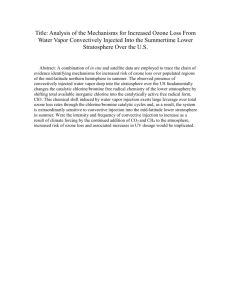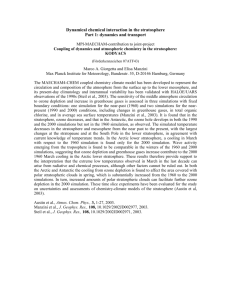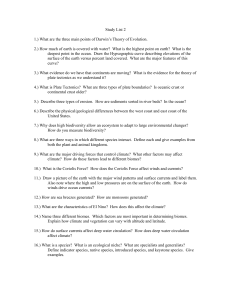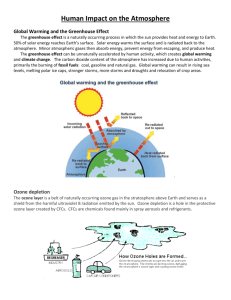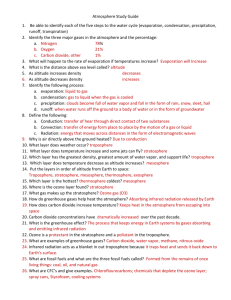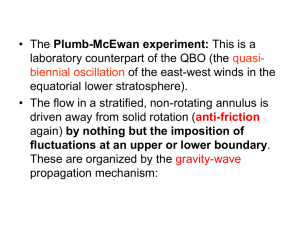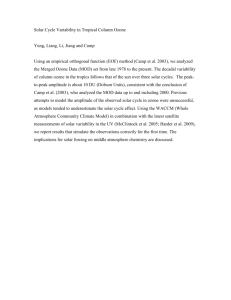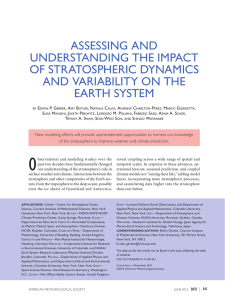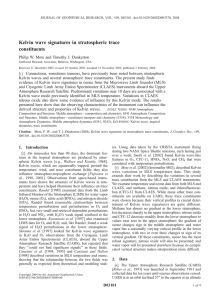DLR project:
advertisement
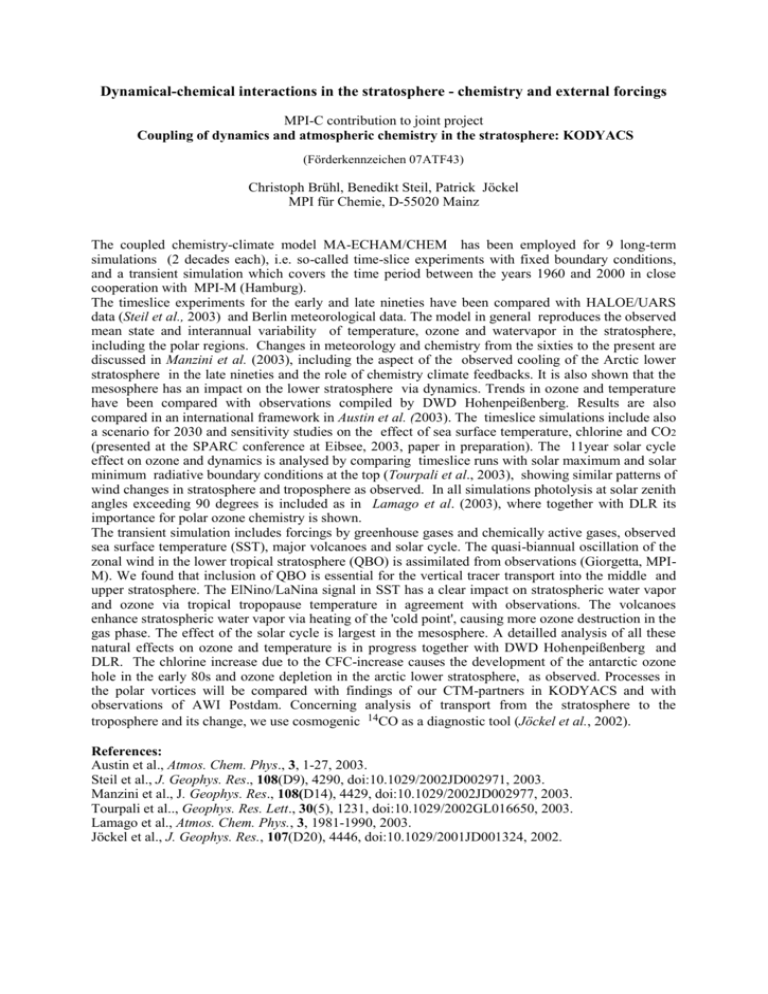
Dynamical-chemical interactions in the stratosphere - chemistry and external forcings MPI-C contribution to joint project Coupling of dynamics and atmospheric chemistry in the stratosphere: KODYACS (Förderkennzeichen 07ATF43) Christoph Brühl, Benedikt Steil, Patrick Jöckel MPI für Chemie, D-55020 Mainz The coupled chemistry-climate model MA-ECHAM/CHEM has been employed for 9 long-term simulations (2 decades each), i.e. so-called time-slice experiments with fixed boundary conditions, and a transient simulation which covers the time period between the years 1960 and 2000 in close cooperation with MPI-M (Hamburg). The timeslice experiments for the early and late nineties have been compared with HALOE/UARS data (Steil et al., 2003) and Berlin meteorological data. The model in general reproduces the observed mean state and interannual variability of temperature, ozone and watervapor in the stratosphere, including the polar regions. Changes in meteorology and chemistry from the sixties to the present are discussed in Manzini et al. (2003), including the aspect of the observed cooling of the Arctic lower stratosphere in the late nineties and the role of chemistry climate feedbacks. It is also shown that the mesosphere has an impact on the lower stratosphere via dynamics. Trends in ozone and temperature have been compared with observations compiled by DWD Hohenpeißenberg. Results are also compared in an international framework in Austin et al. (2003). The timeslice simulations include also a scenario for 2030 and sensitivity studies on the effect of sea surface temperature, chlorine and CO2 (presented at the SPARC conference at Eibsee, 2003, paper in preparation). The 11year solar cycle effect on ozone and dynamics is analysed by comparing timeslice runs with solar maximum and solar minimum radiative boundary conditions at the top (Tourpali et al., 2003), showing similar patterns of wind changes in stratosphere and troposphere as observed. In all simulations photolysis at solar zenith angles exceeding 90 degrees is included as in Lamago et al. (2003), where together with DLR its importance for polar ozone chemistry is shown. The transient simulation includes forcings by greenhouse gases and chemically active gases, observed sea surface temperature (SST), major volcanoes and solar cycle. The quasi-biannual oscillation of the zonal wind in the lower tropical stratosphere (QBO) is assimilated from observations (Giorgetta, MPIM). We found that inclusion of QBO is essential for the vertical tracer transport into the middle and upper stratosphere. The ElNino/LaNina signal in SST has a clear impact on stratospheric water vapor and ozone via tropical tropopause temperature in agreement with observations. The volcanoes enhance stratospheric water vapor via heating of the 'cold point', causing more ozone destruction in the gas phase. The effect of the solar cycle is largest in the mesosphere. A detailled analysis of all these natural effects on ozone and temperature is in progress together with DWD Hohenpeißenberg and DLR. The chlorine increase due to the CFC-increase causes the development of the antarctic ozone hole in the early 80s and ozone depletion in the arctic lower stratosphere, as observed. Processes in the polar vortices will be compared with findings of our CTM-partners in KODYACS and with observations of AWI Postdam. Concerning analysis of transport from the stratosphere to the troposphere and its change, we use cosmogenic 14CO as a diagnostic tool (Jöckel et al., 2002). References: Austin et al., Atmos. Chem. Phys., 3, 1-27, 2003. Steil et al., J. Geophys. Res., 108(D9), 4290, doi:10.1029/2002JD002971, 2003. Manzini et al., J. Geophys. Res., 108(D14), 4429, doi:10.1029/2002JD002977, 2003. Tourpali et al.., Geophys. Res. Lett., 30(5), 1231, doi:10.1029/2002GL016650, 2003. Lamago et al., Atmos. Chem. Phys., 3, 1981-1990, 2003. Jöckel et al., J. Geophys. Res., 107(D20), 4446, doi:10.1029/2001JD001324, 2002.
